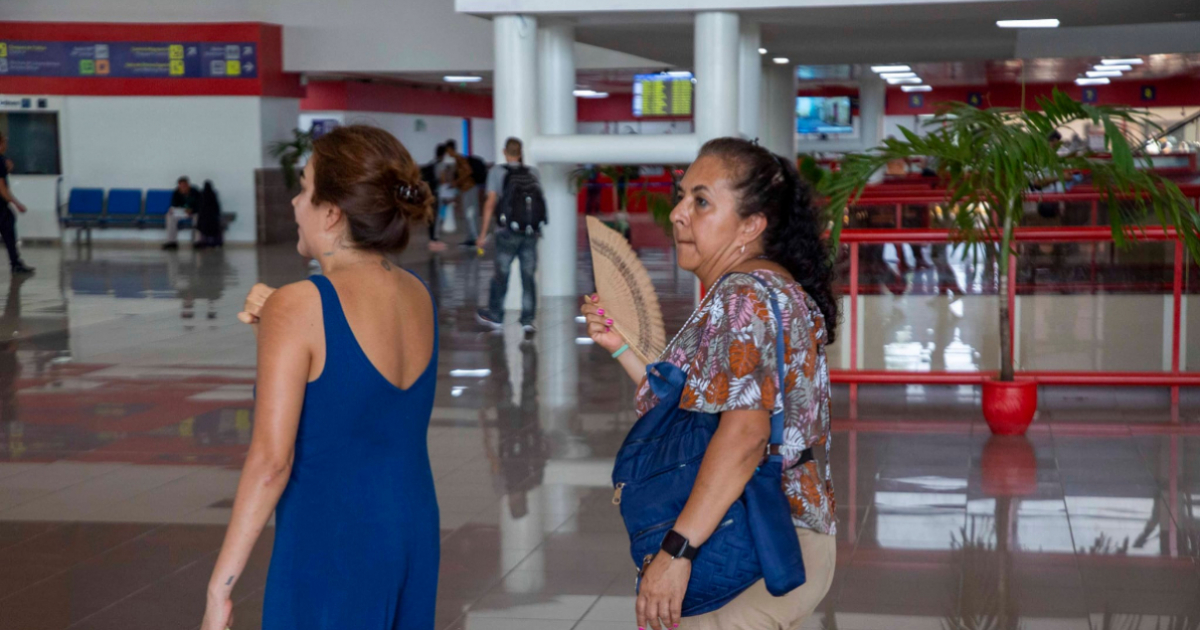The air conditioning issue at Terminal 3 of Havana's José Martí International Airport was partially resolved last Thursday with the activation of one of the two central cooling units. Eduardo Rodríguez Dávila, the Cuban Minister of Transportation, announced on social media platform X that the reactivation of one of the cooling units has "improved the temperature in various areas."
Rodríguez Dávila clarified that this is not a complete solution to the problem that has affected passengers since May but described the restart as an "important step towards restoring and eventually modernizing the cooling system of Terminal 3." He noted that while several state-owned enterprises participated, it was necessary to involve the private sector, specifically MIPYMES Fabricación Construcción Mantenimiento y Reparación CA & CM SRL, which specializes in such work, and RECLITEC, responsible for the chemical cleaning of the condenser, among others.
The minister shared a more detailed explanation of the work done at the airport on Facebook. He stated that Terminal 3 requires a cooling capacity of 1,200 tons, provided by a centralized system of two 600-ton chillers. These units cool water to 7°C, which is then distributed through ducts to cool passenger areas via a temperature exchange with the air.
Rodríguez Dávila justified the recent problems by citing constant use, delays in maintenance, and the poor quality of the water used. He also emphasized that the arrival of summer worsened the situation, prompting the decision to acquire two new chillers, although their delivery was delayed, and to begin deep maintenance on one of the existing units.
Additionally, he mentioned that 12 "rooftop" air conditioning units were decided upon to supplement the cooling system, targeting critical areas such as the final waiting area and the baggage zone. However, the installation was complicated by the need to build specific bases and piping, causing further delays and difficulties, Rodríguez explained.
During the maintenance of the first chiller, the second unit failed, leaving Terminal 3 without central air conditioning, which increased the discomfort for both passengers and staff. Currently, the first chiller is operating at 85% capacity, and efforts are underway to incorporate the second chiller to improve cooling capacity in the coming days.
Rodríguez Dávila also mentioned that a third chiller is being prepared to enhance the system's reliability, and a comprehensive reconstruction of all equipment has been contracted as part of a gradual plan set to culminate in 2025 with the arrival of new equipment. He added that the installation of the 12 "rooftop" units continues, with six currently operational.
Recently, Cuban journalist Elizabeth Cánova shared the various hardships she experienced during her trip from Havana to Madrid, including witnessing Chinese tourists fainting at Terminal 3. On her Instagram account, the presenter and model expressed that "this was a video I didn't want to record, because it's like kicking someone when they're down, but what a shame, Cuba."
In her brief introduction, Cánova explained that there was no air conditioning from the moment she arrived: "Imagine the heat in Cuba, plus the hours of waiting because the system was overwhelmed, and the consequences it brought."
Addressing Air Conditioning Issues at José Martí International Airport
Given the recent developments regarding the air conditioning system at Terminal 3 of José Martí International Airport, here are some common questions and answers that may provide further insight into the situation.
Why was the air conditioning problem at Terminal 3 only partially resolved?
The problem was only partially resolved because only one of the two central cooling units was reactivated. The complete solution requires both units to be operational, along with additional measures for modernization.
What measures are being taken to fully restore the air conditioning system?
Measures include deep maintenance of existing chillers, acquiring new chillers, and installing supplemental rooftop air conditioning units. A third chiller is also being prepared to increase system reliability.
How has the air conditioning issue affected passengers?
The lack of proper air conditioning has caused significant discomfort for passengers, especially during the hot summer months. Instances of fainting and general discomfort have been reported.
